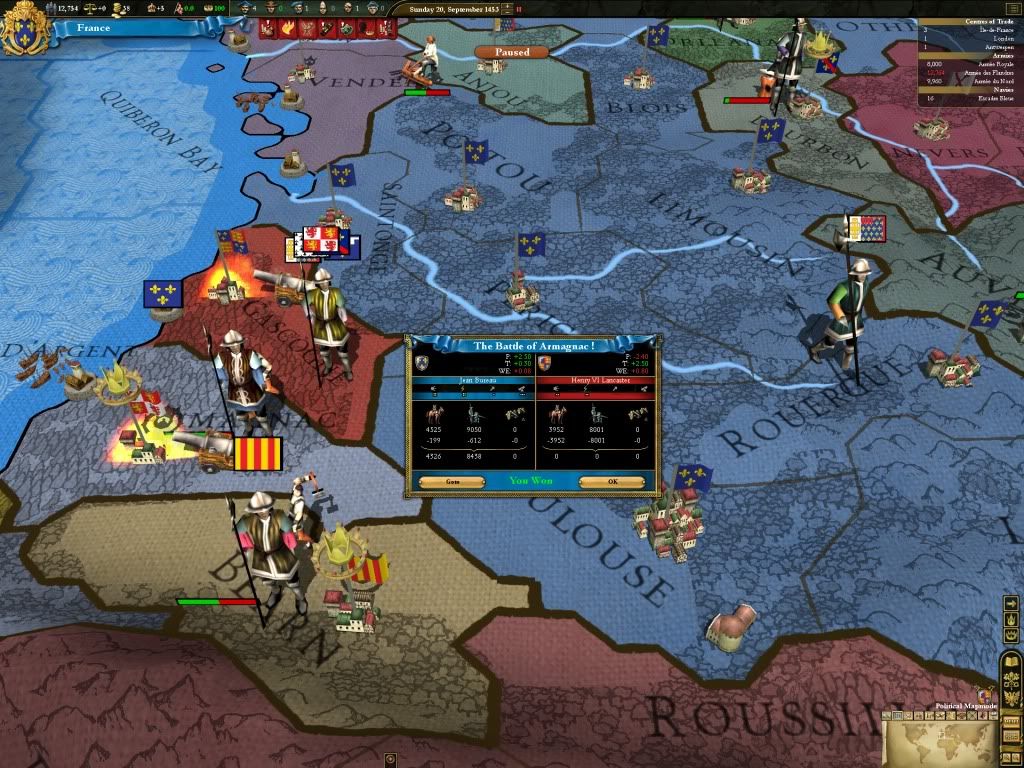NickTheNick
Warlord
Welcome to my Europa Universalis III Interactive AAR for France. This is my first AAR.
Here I will post my complete journey with the French nation as I attempt to grow it into an empire to be reckoned with. I am playing EU3 with the Magna Mundi Ultimate mod (the most recent version). For people unacquainted with the mod, it is a huge overhaul of EU3 that drastically increases the detail, immersion, and historical accuracy, whilst also increasing the general difficulty. That description does not do the mod justice, so just check it out online if you want to know more. For people unacquainted with Europa Universalis III, search it up too. We'll be following the nation of France from 1466 onwards, as we try to forge the French legacy, consolidate our power, colonize the world, and most importantly, dismantle (or destabilize) the Holy Roman Empire.
Please, if you have any questions, comments, compliments, or complaints post now, I don't want to be alone here.
Here I will post my complete journey with the French nation as I attempt to grow it into an empire to be reckoned with. I am playing EU3 with the Magna Mundi Ultimate mod (the most recent version). For people unacquainted with the mod, it is a huge overhaul of EU3 that drastically increases the detail, immersion, and historical accuracy, whilst also increasing the general difficulty. That description does not do the mod justice, so just check it out online if you want to know more. For people unacquainted with Europa Universalis III, search it up too. We'll be following the nation of France from 1466 onwards, as we try to forge the French legacy, consolidate our power, colonize the world, and most importantly, dismantle (or destabilize) the Holy Roman Empire.
Please, if you have any questions, comments, compliments, or complaints post now, I don't want to be alone here.












